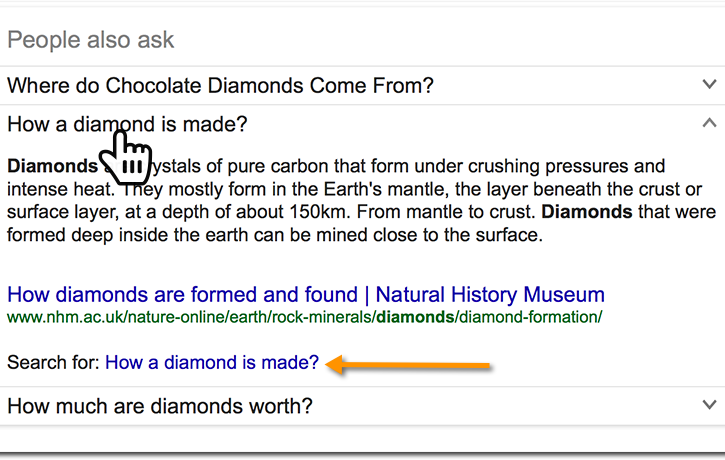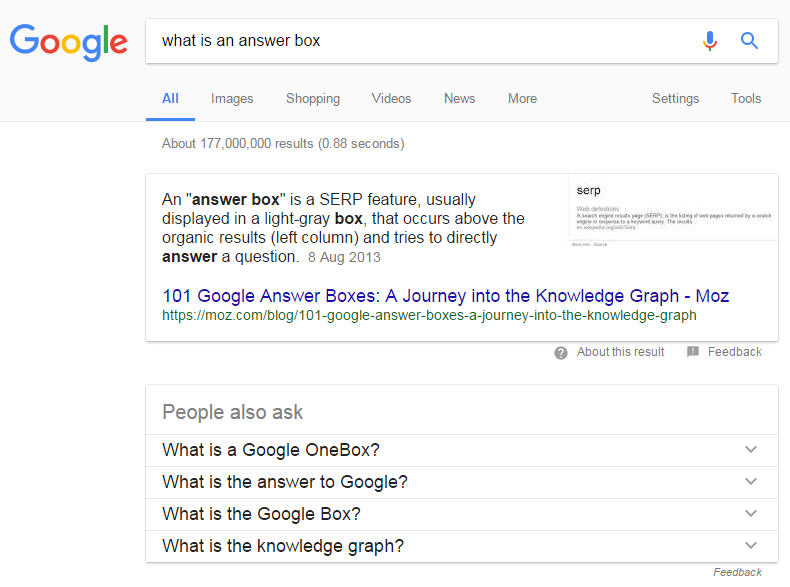
Finding The Most Important Question For Your Business
Ongoing SEO requires you to keep tabs on changing algorithms and Google features. In the past 18 months, there has been an increased importance on the optimisation for Answer Box Results (ABRs).
Through including ABRs within our SEO strategies, we have been able to leap-frog the competition to the desired position; below PPC results and above organic results. Not only this, but by monitoring what content Google was preferring to pull in and applying some consumer intent insight, ROAST has managed to increase ABRs appearing for one client by over 150%.
Along with answer boxes came PAAs (People Also Ask) results. When conducting keyword research, it’s very difficult to know if your long-tail terms are actually worth pursuing. Luckily semantic search made it much easier, but researching your potential PAAs can also have interesting results.
For example, the phrase ‘How can you lower your car insurance?’ with a measly 10 searches a month may have been dropped from your targeting list, however, if you look PAA results and the combined search volume of where it is appearing, this adds up to a fantastic 147,790 searches a month. Quite a difference.
So, the PAA question ‘How can you lower your car insurance?’ is appearing on the following search results pages;
- ‘Best car insurance’
- ‘How to get cheap car insurance’
- ‘New drivers’ insurance’
- Many other searches
We can calculate this number using data from STAT. There is a blog post over on the STAT blog about how the PAA box is evolving which looks at a wider data set.
The big caveat here is that not all of those potential 147,790 users will see the PAA answer box – some will exit google, some click a PPC listing, some an organic listing and so on. However, we now have way to prioritise those questions with a low search volume.
Using this process, we can also pull further insights such as:
- Mobile v desktop split
- What questions appear on mobile but not on desktop?
- How does the list of keywords change for each device?
- PAA rank
- How far down the list is the question likely to appear? This could potentially be combined with searches to provide a weighted score.
- Most valuable keyword it appears for
- Maybe your most valuable PAA result has a high search volume but the amount of keywords it appears for is limited to a handful of highly competitive terms?
- Competitors appearing in PAAs
- The raw data file also includes the exact URLs those PAAs are pulling in, so you can analyse who your biggest competitor is.
- Location make a difference?
- STAT will also export any location differences that you may already be tracking.
Our Strategy Director and STAT board member, Kieran Bass, recently spoke about PAAs at a STAT City Crawl : London conference. Our key insight from getting early access to the STAT PAA reports, was the interesting discrepancy between mobile and desktop. We saw a number of PAAs that occurred more often on one device over another, and some that were only visible on either desktop or mobile. Now this might all be temporary, waiting for the much anticipated mobile-first index, but using data to provide insight that can make our SEO strategies more successful is a key initiative for us at ROAST.
As with all SEO, and all marketing in general, the more data you have to play with – the more informed your activity can become. We’re privileged to be at the forefront of keyword tracking and insight, and will continue to test the boundaries of what should be made into an acronym.







